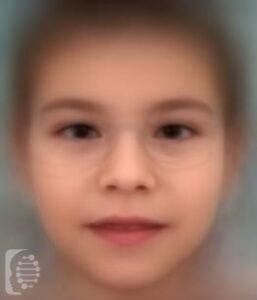What is Congenital Disorder of Glycosylation, Type Ia (CDG1A)?
Congenital Disorder of Glycosylation, Type Ia is an inherited condition that triggers a wide variety of different symptoms in different individuals with the condition. Even individuals within the same family with the disorder can present with very different symptoms and severity of symptoms.
The disorder can present with some serious symptoms and 20% of infants with the disorder will die in the first year of life due to organ failure.
The disorder has been diagnosed in only around 1000 individuals worldwide to date. It is part of a growing family of very rare inherited metabolic disorders.
Also known as: CDG IA; CDGIA; Jaeken syndrome; Phosphomannomutase 2 deficiency; Carbohydrate-Deficient Glycoprotein Syndrome, Type 1A, formerly
Which gene change causes Congenital Disorder of Glycosylation, Type 1a (CDG1A)?
As with other glycosylation disorders, it is caused by an enzymatic defect in the synthesizing and processing of glycans, glycoproteins and/or oligosaccharides. Up to 29 disorders are linked to this metabolic process.
Mutations in the PMM2 gene are responsible for the disorder. The condition is inherited in an autosomal recessive pattern, meaning both parents carry copies of the mutated gene.
Autosomal recessive inheritance means an affected individual receives one copy of a mutated gene from each of their parents, giving them two copies of a mutated gene. Parents, who carry only one copy of the gene mutation will not generally show any symptoms but have a 25% chance of passing the copies of the gene mutations onto each of their children.
What are the main symptoms of Congenital Disorder of Glycosylation, Type 1a (CDG1A)?
Symptoms may vary considerably between individuals with the syndrome.
Some of the most common facial features include a high forehead, triangular face, large ears, a thin upper lip, high palate, dental problems, and eyes that point in different directions (alternating strabismus).
Low muscle tone, inverted nipples, and an abnormal distribution of fat are other possible main symptoms. Individuals may also have developmental delay and a failure to thrive and a failure to gain weight. Mild to moderate intellectual disability is also common, as is motor delay due to an underdeveloped cerebellum.
Other health conditions associated with the syndrome include a buildup of fluid around the heart, blood clotting disorders, stroke-like episodes and seizures as individuals move into adulthood as well as developing issues with the spine and joints.
Males with the disorder experience normal puberty but females do not go through puberty.
How is it diagnosed?
To find out if someone has a diagnosis of Congenital Disorder of Glycosylation, Type 1a (CDG1A), it is important to have a consultation and evaluation with a clinical genetic specialist. Specialists may also suggest specific genetic testing or other types of tests to help reach a diagnosis. FDNA’s AI technology can help speed up the diagnostic process by analyzing facial features and other health information.


